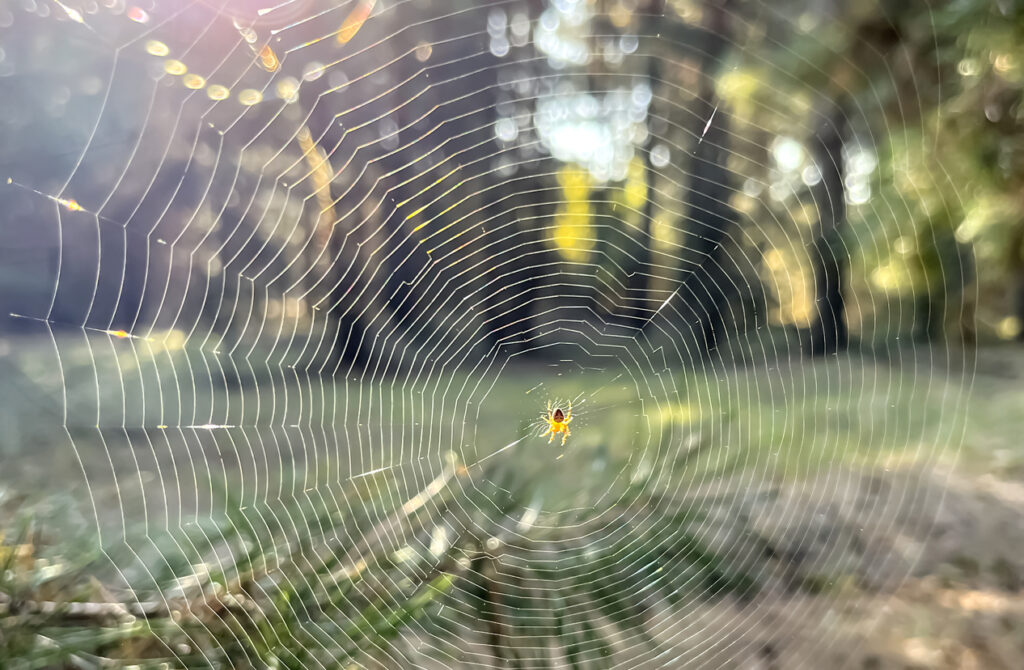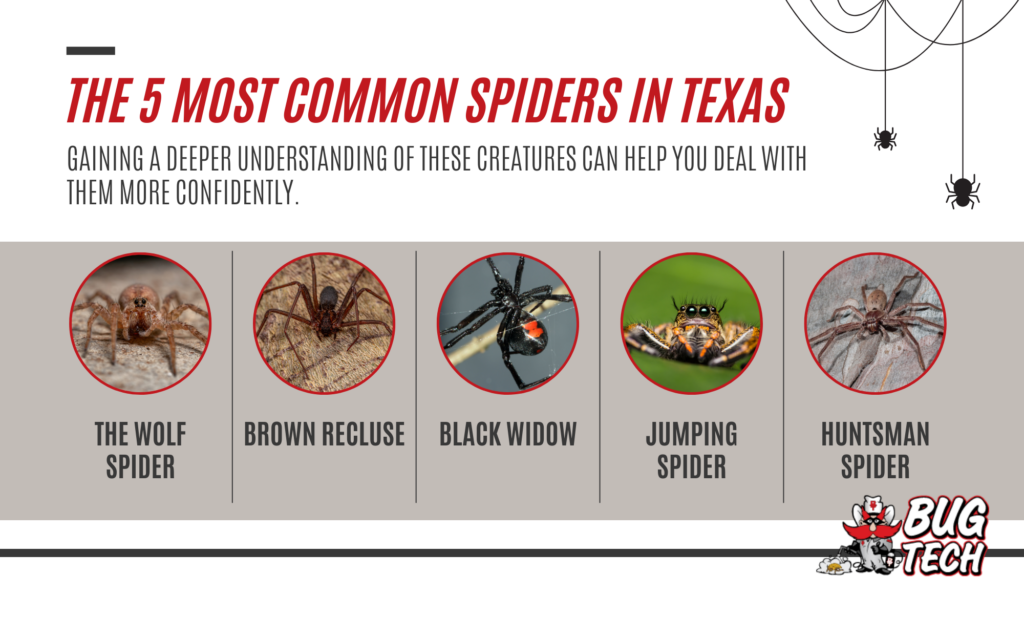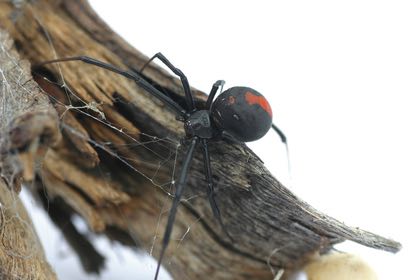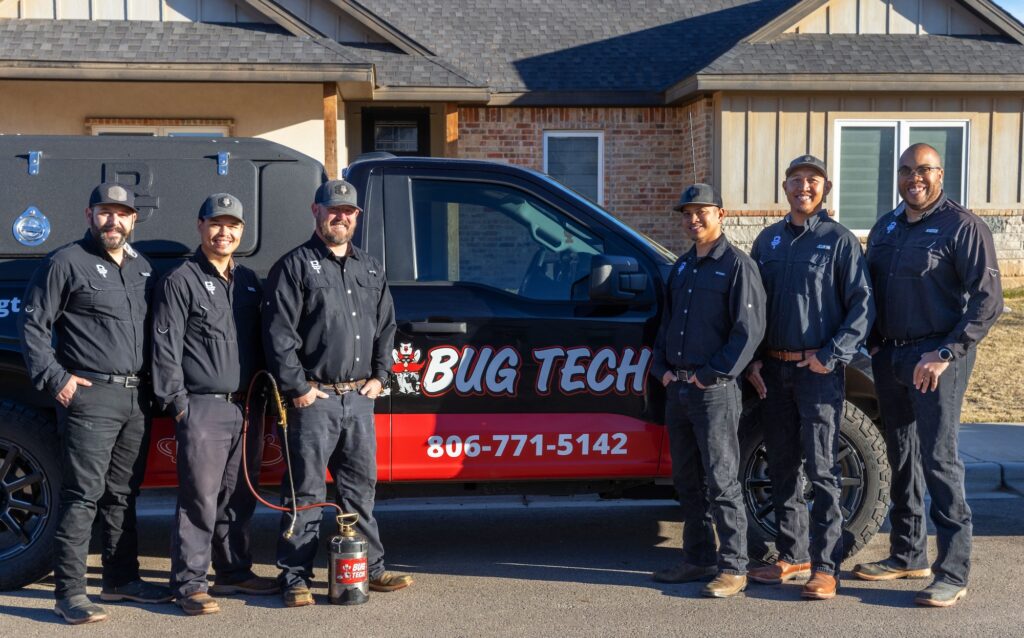8-Legged Texans: A Guide to Common Spiders in Texas

If you’re living in the great state of Texas, you’ve probably shared your home or backyard with some eight-legged neighbors: spiders. Whether it’s the delicate weaving of a web in your garden or a surprising little critter in your garage, spiders are a common part of life in Texas. This vast state, with its varied habitats, hosts a diverse range of species of spiders — from the harmless common house spider to the more intimidating black widow and brown recluse.
At Bug Tech, we specialize in controlling and treating these arachnid populations. Our expertise in identifying, understanding, and managing various spider species allows us to deliver top-notch and effective pest control services.
Gaining a deeper understanding of these creatures can help you deal with them more confidently. So, let’s delve into the world of common spiders in Texas. By coming to identify and understand these spiders, we hope you’ll feel better equipped to coexist peacefully with our eight-legged neighbors. And when the situation calls for it, remember that we at Bug Tech are always here to help.
The 5 Most Common Spiders in Texas
While there are countless different types of spiders in Texas, we’ll focus our discussion on some of the most commonly encountered ones.

The Wolf Spider:
Found throughout North America, wolf spiders grasp their prey with their long legs and forward-facing eyes. Named for their predatory behavior similar to wolves, these spiders are robust and agile hunters who do not weave webs. Wolf spiders can range in size but are generally medium-sized spiders, making them one of the most common spiders in Texas households.
Brown Recluse:
One of the most infamous spiders in Texas is the brown recluse spider. Known for their venomous bite, these spiders typically prefer undisturbed areas like dark places and crawl spaces. They can be identified by their distinctive violin-shaped markings.
Black Widow:
Equally notorious is the black widow spider. Female black widow spiders are easily recognizable due to their shiny black bodies and the signature red hourglass marking on their abdomens. Like the brown recluse, black widows are venomous and should be handled with caution, making them one of the most dangerous spiders in Texas.
Jumping Spider:
With over 300 species of jumping spiders in the United States, they are famously known for their quick, pouncing attacks on their prey. These spiders possess excellent vision and can be found in a variety of habitats.
Huntsman Spider:
This is the largest spider on our list. Also known as the giant crab spider due to its size and appearance, it prefers to live in wooded areas and leaf litter. Although the huntsman spider startles people because of its size, it usually poses no significant threat to humans.
It’s worth repeating that most spider species, the same ones we often encounter in our homes and gardens, actually pose no threat to humans. More often than not, they help control other pest populations by feeding on smaller insects. However, there are exceptions to this, and that’s why it’s important to be able to identify and differentiate between common harmless spiders and potentially harmful ones.
Understanding Spider Habits in Texas
Now that we have identified some common spider species in Texas, let’s delve a little deeper into their habits and habitats. Understanding where these spiders prefer to set up home, and why, can help us prevent unwanted eight-legged visitors or even a full-blown infestation.
Spiders, regardless of their species, generally seek out environments where they can find ample food supply and protective shelter. They thrive in places that are prime hunting grounds for their diet of small insects and other arthropods. This could be anywhere from the undisturbed corners of your garden with lush leaf litter to your home spaces that may attract insects like the kitchen or basement.
Wolf spiders, known for their agile hunting skills, usually live in grassy fields and meadows. However, they can occasionally find their way into homes, especially in ground-level locations.
Brown recluse spiders prefer seclusion and are often found in frequently undisturbed places like sheds, garages, and cellars. Inside homes, they’re likely to embrace areas such as storage rooms, attics, or piles of clothes and shoes.
The infamous black widow, known for her venomous bite, prefers to stay outdoors. She spins her highly organized web in quiet and undisturbed areas, often near ground level. Spotting a tangle of webs indoors could be a sign of a black widow making herself comfortable.
Jumping spiders, despite being pretty harmless to humans, are often the ones we spot most frequently inside our homes. These agile jumpers are curious creatures who seem to be drawn to windows and densely vegetated areas.
Finally, the huntsman spiders prefer to reside under loose tree bark or leaf litter in wooded areas but can occasionally wander into homes, usually in search of prey.
Spiders, with their diverse spectrum of species, prefer habitats abundant in food supply and protective shelter. So by indirectly controlling these factors, like regularly cleaning undisturbed spaces and managing light sources that attract other pests, you can make your home less enticing to spiders. Remember, most spiders have no desire to interact with humans. They often end up indoors or in our way purely by accident, in pursuit of their next meal. But for those times when a casual bystander just won’t do, we at Bug Tech are equipped to handle spider intrusion professionally and effectively.
Spotting Dangerous Spiders: Black Widow and Brown Recluse

While many spiders in Texas are harmless, there are a couple of venomous spider species that require caution: the black widow and the brown recluse. It’s essential to identify these spiders quickly to take necessary action and prevent dangerous interactions.
The black widow spider is one of the most lethal spiders in North America. Female black widows are identifiable by their shiny, black bodies and the red hourglass-shaped mark on the underside of their abdomen. Males and juveniles are smaller and lighter, often with white markings. The black widow prefers dark, secluded areas like garages, basements, or sheds for their webs. Their venom is potent, causing muscle pain, nausea, and difficulty breathing, though it is rarely fatal to healthy adults.
The brown recluse spider is more common in Texas. It can be identified by the violin-shaped marking on its back, with the neck of the violin pointing towards its rear. These spiders are usually not larger than a U.S. quarter in body length, and they have long legs relative to their body size. Their venom can cause serious wounds that require immediate medical attention. Their bites can lead to a severe allergic reaction characterized by fever, chills, and body aches.
A venomous spider bite can be life-threatening, especially for children, the elderly, or individuals with compromised immune systems. It’s crucial to remember that these spiders don’t bite unless threatened, so it’s best to let professionals handle them.
If bitten by a venomous spider, seek immediate medical help before attempting to trap or kill the spider. Be sure to notify a medical professional about the details like the color, size, or shape of the spider, which could be crucial information for treatment.
At Bug Tech, we take venomous spiders seriously. If you suspect a dangerous spider sharing your space, please give us a call. We are well-equipped to safely identify and remove venomous spiders from residential and commercial premises, ensuring the safety and health of everyone around.
How Bug Tech Can Help: Our Spider Control Strategies

At Bug Tech, we understand that while spiders play a critical role in our ecosystem, they’re not always the most welcome guests in our homes. That’s why we have developed extensive and effective spider control strategies to ensure your home remains comfortable and safe.
One of the key approaches we use in spider control is Integrated Pest Management, a method that considers the life cycle of pests and their interaction with the environment. Various techniques like habitat manipulation, chemical use, and biological control are combined for effective and environmentally sensitive pest control.

Chemical treatment is often necessary for severe infestations. We strongly focus on targeting a spider’s food source. This approach allows the spider to ingest the chemical after consuming its prey, leading to a swift elimination of target species without causing harm to non-targeted ones.
Habitat modification is another essential part of our strategy. By altering the conditions that are favorable for spiders, like reducing clutter, sealing cracks, and managing light sources that attract other insects, we can make your home less attractive to spiders.
Efficient spider management is not only about elimination but also about preventing future infestations. Given the diversity of spider species and their behaviors, we offer customized spider and scorpion control plans designed to meet individual needs.
At Bug Tech, we are committed to ensuring you live in a comfortable, spider-free environment. So whether you’ve spotted a single spider or are dealing with an infestation, don’t hesitate to reach out. Let us handle the unwanted eight-legged guests while you enjoy the peace and comfort of your home. Contact us now for a free estimate and learn more about your personalized spider control plan!
